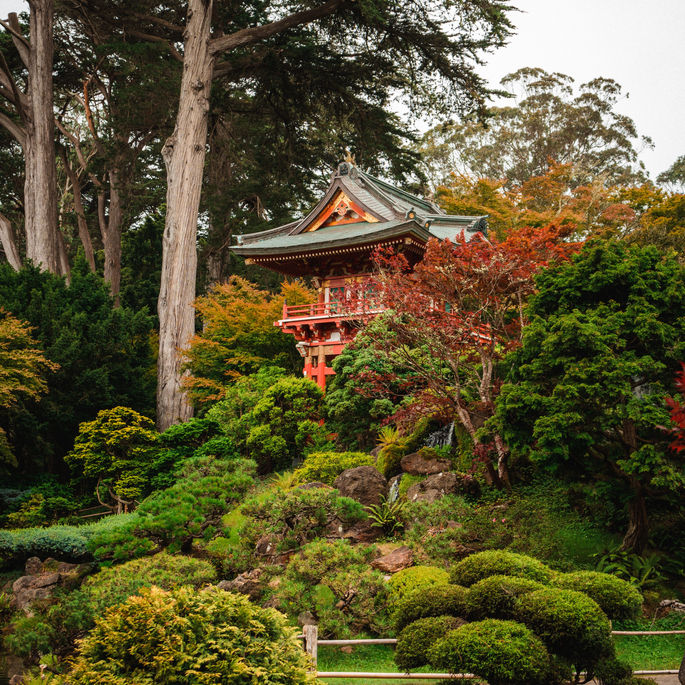SHINTO SHRINES
OF JAPAN
Abstract
The Shintoism is Japan’s oldest religion. Shinto religion is guided by the connection between all things. The loosely defined practices have left open avenues in which the Japanese have filled with traditions that are specific to the values they have as culture. Shinto shrines are places of worship unique to the kami, Japanese “gods.” Many of the important historic shrines were built by the government and tied to the imperial family. Japan today is still a monarchy and the emperor is believed to be a direct descendant of the goddess Amaterasu. Although, the modern-day monarch of Japan is not treated as a god but more of a unifying figure separate from government. The imperial shrine known as the Ise shrine undergoes a traditional “renewal” every generation; every 20 years. The renewal process is the destruction rebuilding of the Ise shrine from the ground up. The rebuilding represents the regeneration of spirit and the continuum of the Japanese nation. The specific knowledge of the architecture is held by few, and is passed down to the next generation. Renewal tradition is a unifying action that helps strengthen the connection of the Shinto members with each other and their history.
Gallery

Shinto and the Imperial Family History
The Imperial family of Japan was historically believed to have a shared bloodline with the Goddess of the sun, Amaterasu. Yet Emperors are not treated as Gods and have even taken on less politically significant roles in recent years. Similarly, many people of Japan do not consider themselves religious even though they pray at the various shrines which are deeply rooted in Japanese culture. It is amazing the respect that is shown to tradition and history despite living in the ever-changing information age.
The modern-day monarchy of Japan is much different than one would expect. When a western mind like my own perceives an Emperor, I assume that the Emperor is the monarchical ruler of the people, government and policy. The role of an Emperor, however, is to be more of a unifying figure for the people which is separated from government. Naruhito, the current Emperor of Japan has taken a progressive role as he has a foreign education and has been a supporter of the Paralympic games, shaking hands with Paralympians in a society where this is not the norm. Naruhito appears reachable or relatable because he interacts with the community which is really his primary duty as emperor to “unify” the people.
Ise Shrine, located in Ise Japan is comprised of two components. The inner (Naiku) enshrines the Sun Goddess Amaterasu and the outer (Geku) which enshrines the agriculture God Toyouke Omikami. Ise has over 125 buildings occupying 220 acres of land, over one third of the city’s total land. Takeshita Noboru was prime minister in the 80s when the Japanese economy was in a bubble. He suggested his “three pillars” idea which involved strengthening international cooperation peace and exchange. The third pillar was a focus on preserving traditional Japanese heritage. Even in an economic climate that requires adaptation and progression, Noboru implemented policy that respected Japanese tradition. The most surprising thing about the Ise shrine is the fact that it is rebuilt every 20 years the shrine’s buildings are completely rebuilt, keeping the same traditional Japanese structure it had before (Loo 2010). The purpose for this is the Shinto belief of death and rebirth.
Amaterasu’s brother, Susano-o is believed to be the ancestor or even father of the God Ōkuninushi, who is the deity enshrined at Izumo Taisha in Shimane Prefecture. This deity is known to be the creator of the land in Japan, and deity of relationships/marriage. Funny enough, when visitors pray at this shrine, they clap their hands twice for themselves and twice for their partners or desired partners. The Izumo Taisha is the largest shrine building in Japan, however it does not undergo periodic reconstruction like the Ise shrine. Instead the Izumo Taisha is renovated regularly.
Bock, Felicia G. “The Rites of Renewal at Ise.” Monumenta Nipponica 29, no. 1 (1974): 55–68. https://doi.org/10.2307/2383463.
Eder, Matthias. Asian Folklore Studies 31, no. 1 (1972): 124–25. https://doi.org/10.2307/1177542.
Holtz, M. (2015). In “nonreligious” Japan, shrines still exert a pull. Christian Century, 132(21), 20.
Izumo Taisha. (2020). https://www.japan-guide.com/e/e5804.html
Lamont-Brown, R. (1999). Japan’s Imperial Family: Its Role and Meaning in Modern Japan. Contemporary Review, 275(1604), 118.
Sims, Martha, and Martine Stevens. 2011. Living Folklore: Introduction to the Study of People and Their Traditions.






